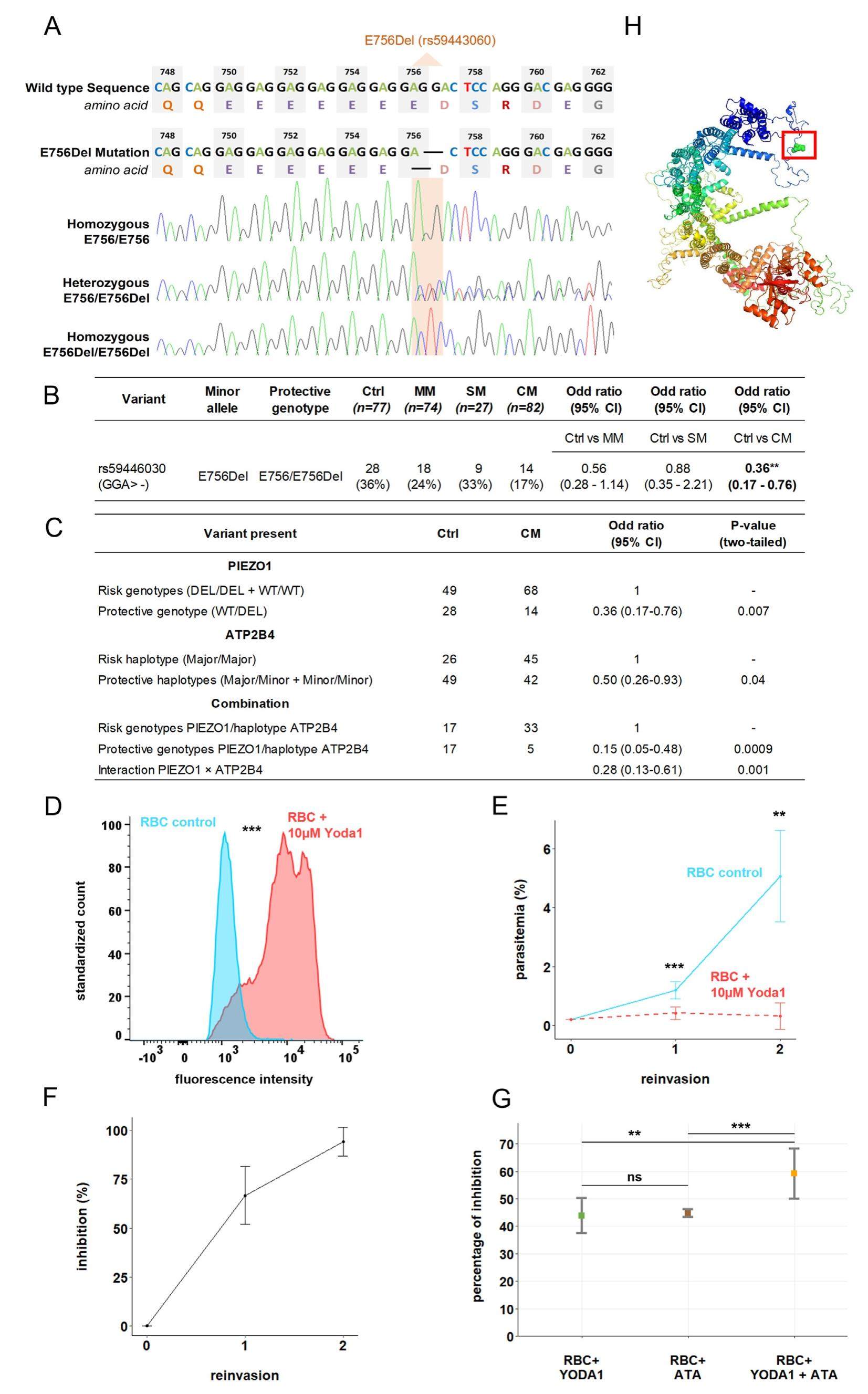
Concurrent PIEZO1 activation and ATP2B4 blockade effectively reduce the risk of cerebral malaria and inhibit in vitro Plasmodium falciparum multiplication in red blood cells


Malaria caused by the Plasmodium falciparum parasite is responsible for more than 240 million cases per year and killed 627, 000 people in 2020, mostly African children. The malaria parasite is transmitted by mosquitos belonging to the genus Anopheles. After an asymptomatic liver stage, the parasite is released into the bloodstream to invade red blood cells (RBCs) and replicate asexually. This erythrocytic phase is associated with a variety of clinical manifestations, including mild and severe malaria. Cerebral malaria (CM) is one of the most severe forms, characterized by the sequestration of parasitized RBCs in the small capillaries of the brain and the local development of cytokine-mediated inflammation. Genetic variants in genes encoding proteins involved in red blood cell physiology are protective factors against severe malaria, as clearly demonstrated for the sickle cell variant of hemoglobin (HbS). Rare gain-of-function mutations in Piezo1, a mechanosensitive calcium channel, are involved in hereditary xerocytosis, a disease characterized by red cell dehydration and mild hemolysis. Interestingly, RBC dehydration is associated with reduced Plasmodium infection in vitrosuggesting that PIEZO1 polymorphisms may protect against malaria. Recently, a gain-of-function PIEZO1 E756del variant (rs59446030) under positive selection in Africa, was associated with protection against severe malaria in children in Gabon. However, a large caseecontrol study in Ghana failed to replicate this association. In this study, we sought to further characterize the role of this PIEZO1 polymorphism in malaria by confirming its association in a Senegalese population and identifying the genetic interaction with polymorphisms in the ATP2B4 gene that encodes PMCA4, the major RBC calcium pump. We prove that activation of Piezo1 modulates intracellular calcium concentration and inhibits Plasmodium falciparum multiplication in RBCs. Furthermore, we demonstrated the additive effect of Piezo1 activation and PMCA4 blockade on the inhibition of parasite multiplication in erythrocytes.
